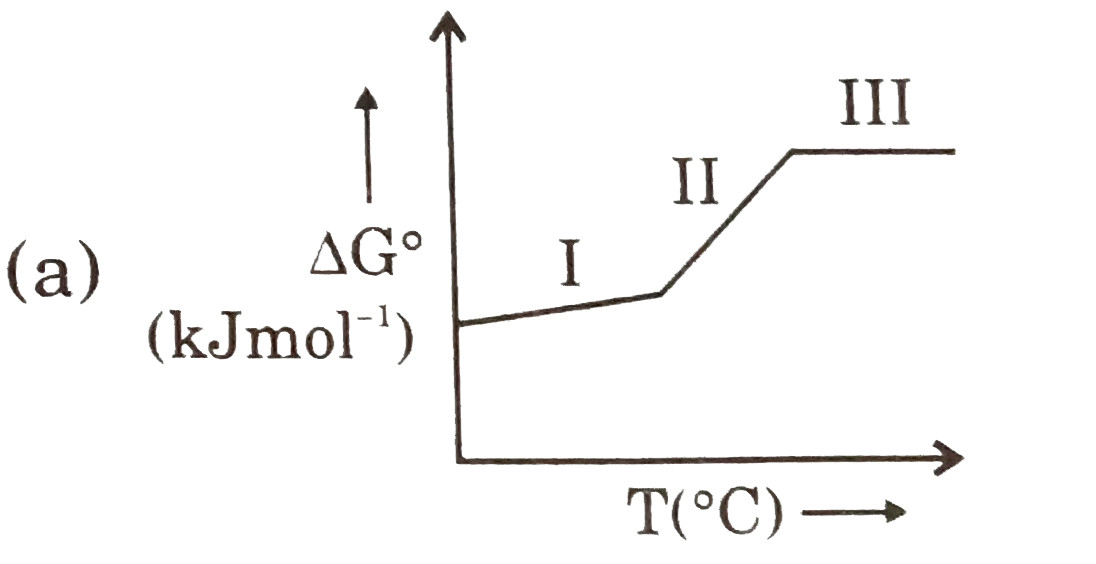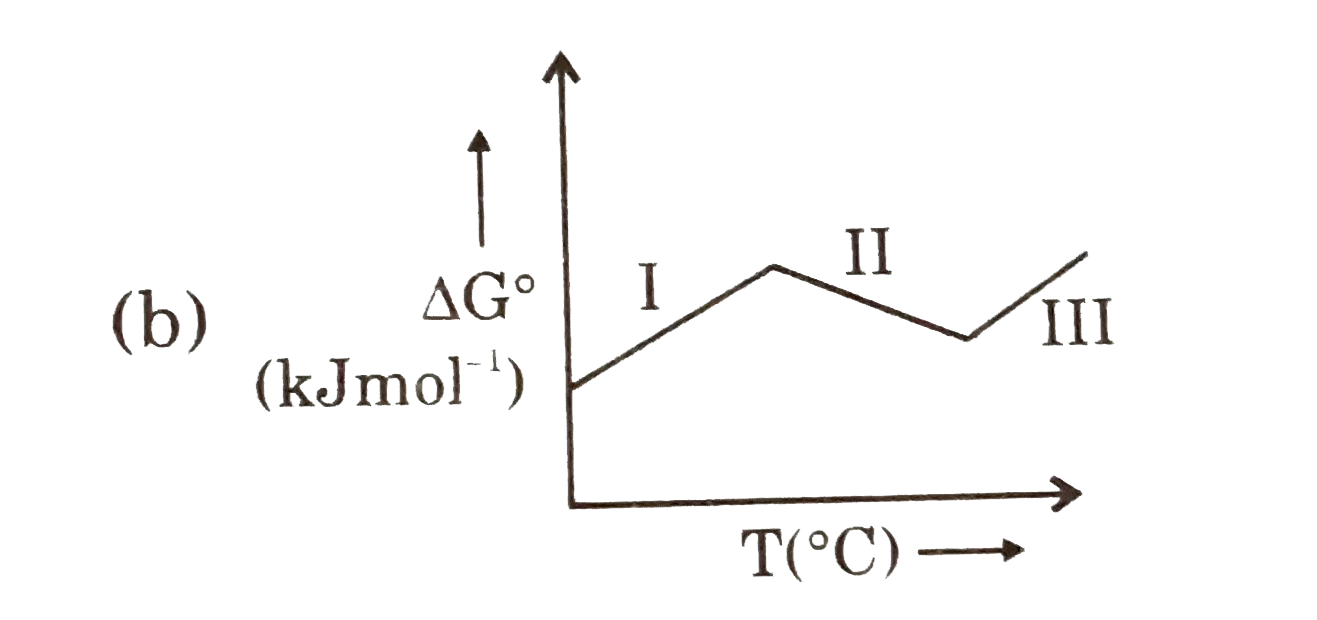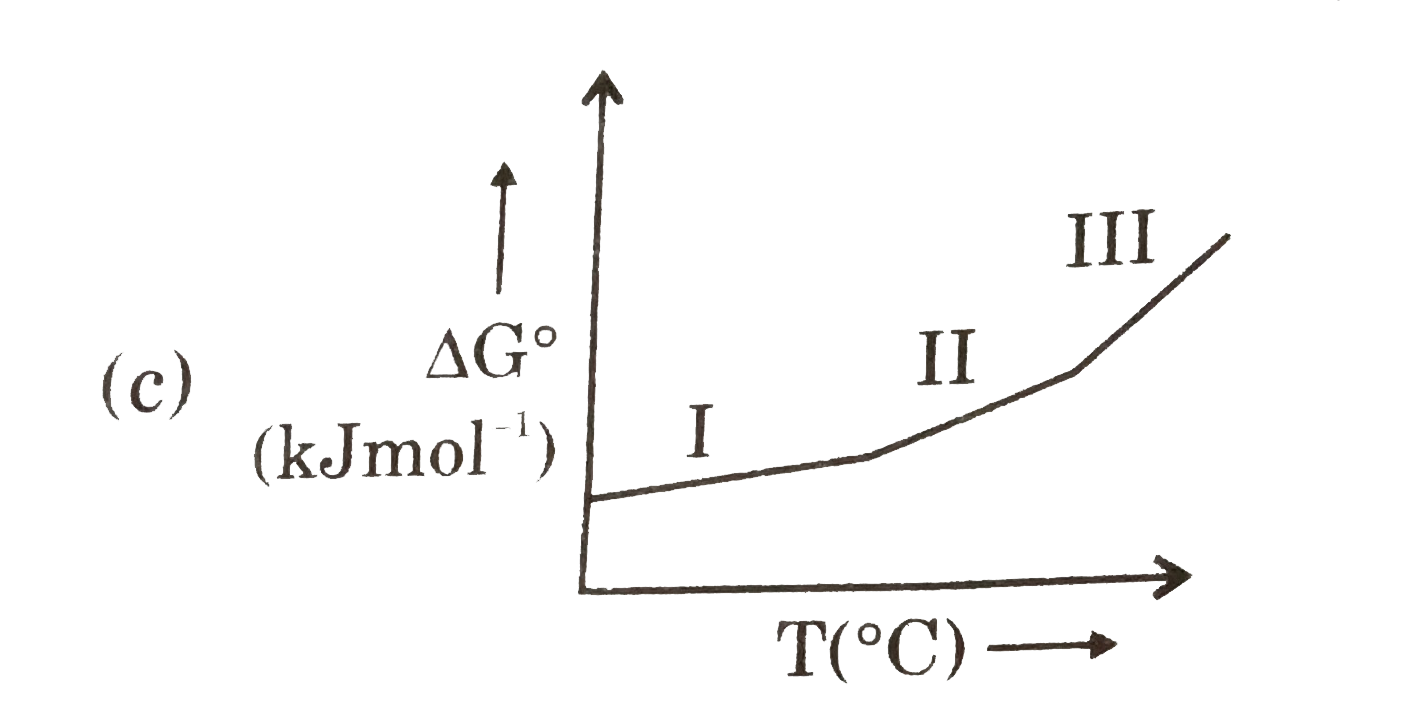Which of the following plots between ΔG∘andT(^(∘)C) represents the sequence of oxide of formation of a metal in its different phase as given below? Assume the metallic oxide is thermally stable in different stages
M(s)+O2(g)I−−→MO2(s)
M(l)+O2(g)II−−→MO2(s)
M(g)+O2(g)III−−→MO2(s)
A

B

C

D

Text Solution
The correct Answer is:C
|
Similar Questions
Knowledge Check
C(s)+O2(g)Δ−−→CO2↑⏐⏐
AFor disproportionation reaction.BFor comproportionation reaction.CFor either intermolecular redox reaction or displacement reactionDFor either thermal combination redox reaction or thermal decomposition redox reaction.Which method of purification is represented by the following equations ?
Ti(s)+2I2(g)523K−−→TiI4(g)1700K−−−→KTi(s)+2I2(g)AZoneBCupellationCPolingDVan Arkel Method.Which method of purification is represented by the following equation?
Ti(s)+2I2(g)523K−−→Til4(g)1700K−−−→Ti(s)+2I2(g)AZone refiningBCupellationCPollingDvan-Arkel
Complete the following reactions :
(i) CaO(S)+H2O(l)→
(ii) Na2O(S)+H2O(l)→
(iii) Fe(S)+H2O(g)→
(iv) CuO(S)+H2(g)→
(v) CO(g)+H2(g)Co−−→
View SolutionWrite a balanced chemical equation :
FeSO4(s)Heat−−→Fe2O3(s)+SO2(g)+SO3(g)
View SolutionIdentify the substance oxidised and substance reduced in the following reactions :
(i) ZnO(s)+C(s)→Zn(s)+CO(g)
(ii) 2Na(s)+O2(g)→2Na2O(s)
(iii) CuO(s)+H2(g)→Cu(s)+H2O(l).
View SolutionComplete the following reactions :
H2(g)+MmOo(s)Δ−−→
View SolutionWhich method of purification is represented by the following equation?
Ti(s)+2I2(g)523K−−→Til4(g)1700K−−−→Ti(s)+2I2(g)
View Solution
